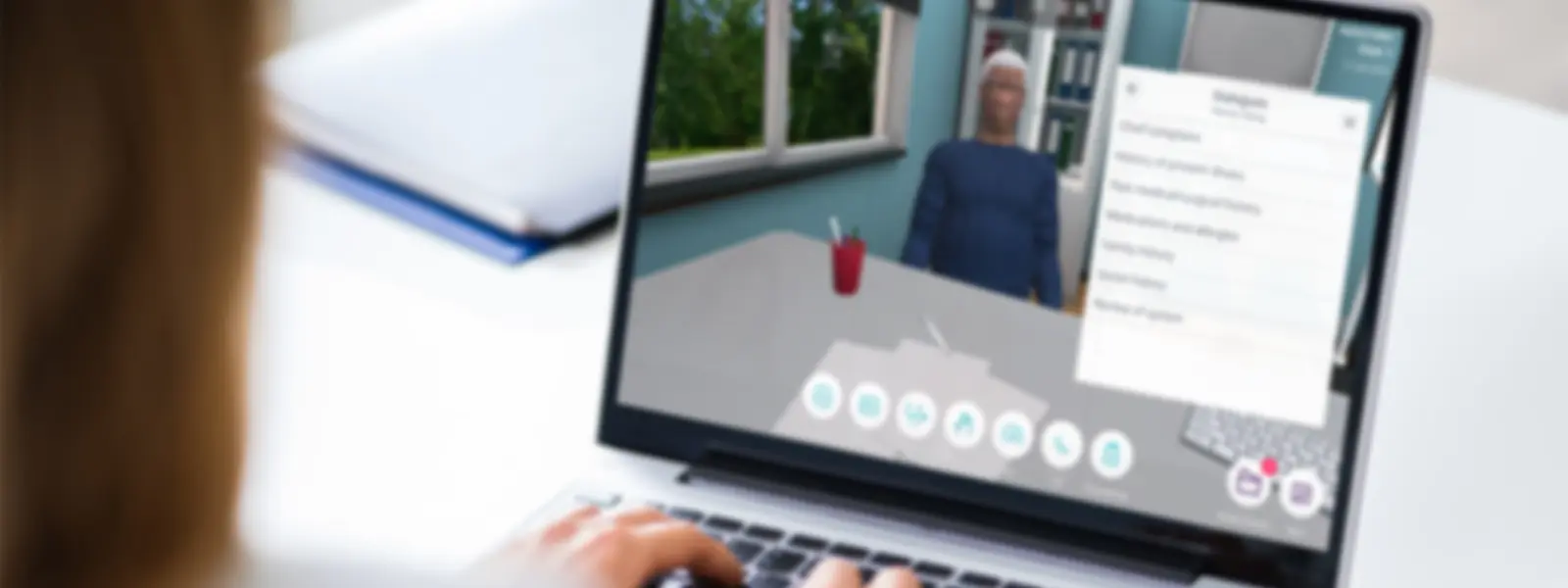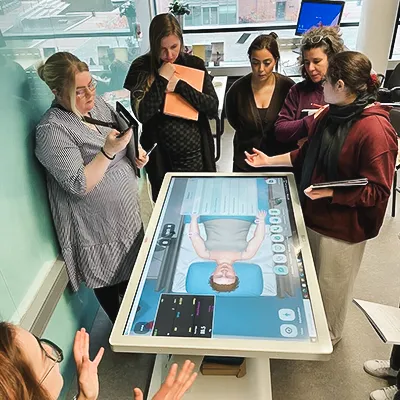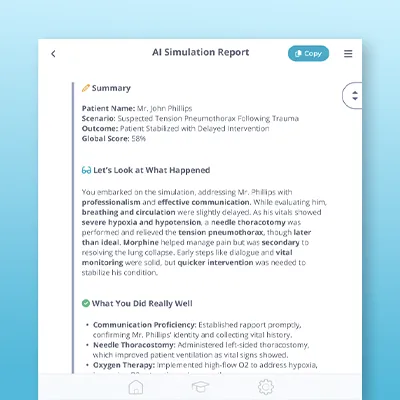Streamline the History-Taking process on Body Interact
At Body Interact, we are committed to continuously improving our platform to provide an even more dynamic and realistic learning experience for healthcare professionals and learners.
With this in mind, we are excited to announce the launch of a new and enhanced History-taking feature, scheduled for release in the upcoming month.
This new structure is designed to reflect the complexity and thoroughness of real-world patient interactions, offering a comprehensive framework for gathering essential patient information. The new History Taking feature will now include the following key categories:
- Chief Complaint: This is the initial point of engagement, where students learn to focus on the patient’s primary concern. Identifying the chief complaint accurately sets the foundation for a correct diagnosis and treatment plan.
- History of Present Illness: Students will be able to delve deeper into the timeline and development of the patient’s current condition. This skill is crucial in understanding the evolution of symptoms and identifying any patterns or triggers.
- Past Medical / Surgical History: This category emphasizes the importance of recognizing how past health issues and surgical interventions inform the current clinical situation, helping students contextualize patient history.
- Medications and Allergies: Safe and effective care begins with understanding what medications the patient is taking and identifying any potential allergies. This section will train students to prioritize patient safety and minimize the risk of adverse reactions.
- Family History: By including family health history, students will gain insight into hereditary conditions that could impact the patient’s current and future health. This section encourages students to explore genetic predispositions and their relevance to patient care.
- Social History: Social factors such as lifestyle, employment, and environmental influences play a significant role in a patient’s overall health. This category broadens the student’s understanding of how socioeconomic factors may affect patient outcomes.
- Review of Systems: This final section allows students to perform a systematic review of all body systems, ensuring they do not miss any underlying issues that may not be immediately apparent through the chief complaint or history of present illness.
Introducing Body Interact: A Virtual Patient Simulator
This update represents a significant step forward in creating a more structured and effective approach to clinical assessments. By training learners to gather patient information in a systematic, comprehensive manner, we are enabling them to improve their critical thinking and clinical reasoning skills. These new categories reflect best healthcare practices, helping students learn to approach patient interactions holistically, as they would in a real clinical environment.
With this more detailed and organized history-taking process, learners will be better prepared to assess patients accurately, recognize patterns in complex cases, and make informed clinical decisions.
Preparing for the transition with the Body Interact team
We want to ensure that you and your students have ample time to familiarize yourselves with this enhanced structure. It is crucial to prepare the all community of users by explaining the differences they will encounter with the new dialogue format once it is implemented.
If you would like to schedule a meeting to review the update or require any assistance, please don’t hesitate to reach out to us for guidance. We look forward to supporting you through this transition and enhancing the learning journey together.
Thank you for being an essential part of the Body Interact community!
By Ana Santa – MSN, APRN
Editorial Manager









